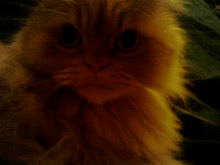Multivariate Mapping or Analysis is the investigation and analysis of more than one statistical variable at a time. This type of analysis is used to display the statistical relationships amongst objects or variables. It can be used to display statistically consumer strategy purposes. It is a very useful way to display statistically significant information for transportation and remote sensing purposes, or in other words satellite imagery. It is also a great way to explain climate characteristics such as with temperatures around the U.S. and types of soils that occur.
These types of maps can be created using ERDAS, Arcgis, or just simply through Adobe Illustrator. These maps can be created through ERDAS by principle component analysis or by a color classification system, where the user can assign 7 different bands of the elecromagnetic spectrum different colors, which is especially useful for classification for different land cover features. Multivariate Mapping can be analyzed through Arcgis by displaying graduated color and symbol maps displaying say type of habitat for graduated color maps and number of animals in a certain habitat. Through Adobe Illustrator, one can create multivariate maps by using the paint, lasso tool, knife tool for displaying temperature and the scale and select tools.
This website is about how multivariate maps can help out with corporations creating products for the consumer. It starts out talking about how multivariate maps help to analyze the covariation amongst variables in different data sets and to describe the relationship between them. Multivariate mapping methods can be placed in three categories: data reduction, which is reducing the difficulty of co-variation to show underlying factors; classification which groups objects which are the same on the basis of co-variation and data relating, which relates one or more data sets to show related factors. Different methods in this group analyze different types of responses and use a different approach to achieve the same objective. An example of a bi-plot map is displayed on this website, which shows the relationship between 3 different types of food consumer companies. A new product development strategy is shown which shows a series of product concepts explaining existing and potential new products. The map show the relationship between consumers, concepts and expectations from consumers to the desired product being made.
http://www.camo.com/rt/pdf/brochure/unscrambler/consumer_to_scientist.pdf-
Multivariate maps are displayed very well in atlases which show as much data as possible in one map. In interactive multimedia cartography, there are many individual variables that can be put together in many ways. Visual variables that are put into these maps are points, lines, areas, surfaces and volumes. Surfaces can be displayed as two spatial dimensions; size and value. Five texture related visual variables have been identified for multivariate mapping, including arrangement, size, shape, density and orientation. Each visual variable shows different data features. The visual variable approach by Wilson states for the classification of variables that exterior and interior texture patterns have to be split, a visual variable contains contiguous and categorical data, a minimum number of different values should be easy to tell apart and when two visual variables are combined, they should be visually seperable. A map is multivariate usually if more than one retinal value is used to obtain information and if more than one data variable is visualized. Proportional dot maps are a example of good visual variables for the multivariate map. Generic multivariate mapping is the graphic visualization of atlases by data and instructions. This mapping approach deals with different map layer types and different multiple visual variables. Each map layer has its own set of aggregated visual variables. The multivariate symbolization approach can be used in two levels. First, multiple visual aspects can be applied to areas like colored circles. To improve the ability for a person to be able to interpret the map, an attribute can be assigned to one or more visual variables. On the second level, charts categorized by interval graphs or multiple intervals are created containing different thematic variables, such as age that relate with the visual variables. An XML-based interface called Map Description Files contains all visual, variable characteristics for the multivariate map. It contains an area layer for polygons, a line layer for polylines and a point layer for points dealing with symbols or charts.
Microanalysis maps are remote-sensing based maps for which multivariate mapping applies. Automatic classification groups pixels in a thermal image together into different clusters related to different measurements. The K-means technique performs a partitioning of data into different numbers of classes. Objects are usually assigned to the class whose center is the closest to a chosen distance, as with Euclidean distance. Then there is the C-means technique, for which the centers of the classes are updated and this process is repeated until convergence happens. Then objects are assigned to the class for which their degree of membership is at the maximum extent. The K technique is the best technique for convergence and the best technique overall out of the two. The C technique does have the advantage though of computing the degree of confidence of this classification for every pixel. There is a technique for finding arbitrary shape by first coming up with an estimation of the probability density function, which occurs from the Parzen window technique in the parameter space after linear or non-linear mapping and one N or M dimensional smooth kernel h is then combined with any point that is a representation of pixel i and then these kernels are added. The estimated pdf is probably composed of a few peaks, or in other terms modes. The number of classes detected in the pdf depends on the width of the kernel.
 Hi everyone,
Hi everyone,




